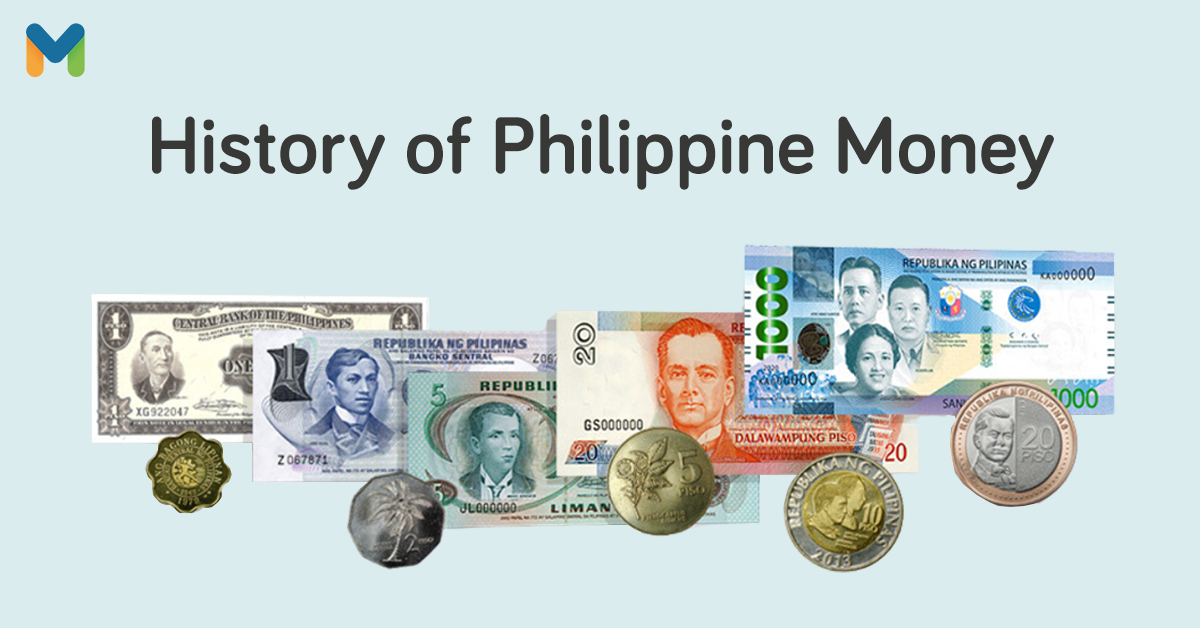Five hundred counterfeit banknotes with a notional value of ₱480,000―that’s the amount of fake money that the Bangko Sentral ng Pilipinas (BSP) seized from January to September 2021.[1] And if you account for the holiday season, there could be more.
While the BSP is doing its best to remove fake money from circulation, fraudsters are coming up with more sophisticated schemes to have their victims unwittingly accept it. As such, there will always be a chance that counterfeit cash will land in your hands. Moreover, telling a fake banknote from a legit one can be quite challenging, especially if you don’t know what to check.
A fake bill is money lost. To keep yourself from sustaining such a loss, we’ve come up with a simple guide on how to identify fake money vs. real money. We’ve also covered what you’ll need to do if you receive fake banknotes.
Read more: The History of Money in the Philippines
How to Detect Fake Money vs Real Money in the Philippines
When you know what to look for and where to look, you can easily determine fake money vs. real money. The BSP has come up with a three-step inspection method called FEEL, LOOK, and TILT. This method is detailed below together with two additional handy tips.
✔️ Feel
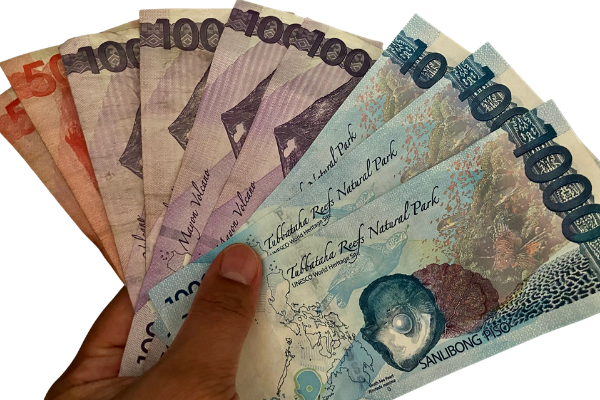
In this step, you’re supposed to feel a note’s tactile cues that will prove its authenticity. Here are the things you need to check:
- Security Paper – The Philippine banknote should feel different from the usual paper. After all, it’s primarily made of abaca fiber. It shouldn’t be exaggeratedly smooth.
- Embossed Prints – The note features embossed elements, so you’ll feel a variation of textures across its surface.
- Tactile Marks – A few pairs of congruent lines on either side of the note are marks that help visually impaired people to identify and differentiate bills. Furthermore, these marks are a sign that your note is authentic.
✔️ Look
How can you tell the difference between real and fake money? You can tell the difference between fake money vs. real money by looking at the unique visual features of a note. Here’s what you need to check:
- Watermark – This is the “apparition” of the faces featured on the bill. If you hold the note under the light, you’ll see these shadow images on the right side.
- Security Fiber – Security fibers are the thin yet visible lines that are randomly spread on the front and back of the note. They should come in blue and red.
- Asymmetric Serial Number – At the lower left and upper right sides of the note, you’ll find the serial number. This should bear one to two prefix letters and six to seven digits. The font increases in size and thickness.
- See-Through Mark – At the lower right corner of the note, you’ll notice a truncated Babaylan script. Hold the money against the light, and the truncated part will be visible, revealing the entirety of the script. The said script means PILIPINO.
✔️ Tilt
Continue your visual inspection by tilting your money. Doing this will reveal features that aren’t found on fake notes.
- Security Thread – For smaller notes like ₱20 and ₱50, this is the vertical line that runs across the width of the bill. This line becomes visible when you view your bill against the light. For larger notes, such as ₱100, ₱200, ₱500, and ₱1,000, the line appears as a series of metallic dashes featuring the note’s value and the text “BSP.”
- Concealed Numerical Value – At the upper right corner of the bill, you’ll see a smaller version of the portrait. Tilt the note at a 45-degree angle, and you’ll see the money’s value over the portrait.
- Optically Variable Ink (for ₱1,000 notes) – The money’s value printed on the lower right corner of the note should not be only embossed; its color should also change from green to blue when you view it at different angles. A fake 1000-peso bill doesn’t have this feature.
- Optically Variable Device Patch (for ₱500 and ₱1,000 notes) – The reflective foil printed on the left side of the note’s portrait has a hidden visual cue. To check if it's a fake 500 peso bill or not, tilt your ₱500 note. You’ll see an image of the Blue-naped parrot. For the ₱1,000 note, you’ll see an image of a clam with the South Sea pearl.
- Enhanced Value Panel (for ₱500 and ₱1,000 notes) – For newer notes, the numerical value on the left side of the bill should have a color-shifting effect.
✔️ Try Damaging the Bill
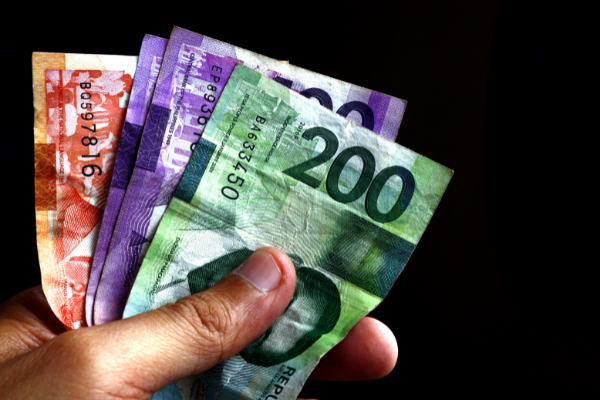
Rub some water on the paper bill. If the color smudges and the bill starts tearing, it could be a sign that the money you have is fake. Remember, the notes are not made of regular paper, so they shouldn’t come apart even if they're exposed to water. Also, try to scratch the bill. If the printing smears or shows any sign of damage, it could be counterfeit.
✔️ Consider the Changes in Design
From time to time, the BSP releases new money designs. In every release, you should pay attention to the new elements and features of the notes.
For instance, the 2022 design of the ₱1,000 note features the Philippine Eagle instead of the country’s World War II Heroes. This new design is part of the polymer or plastic bills that runs alongside the existing 1,000 peso paper banknotes.[2] So, if you receive a ₱1,000 note featuring the Philippine Eagle that’s not printed on polymer, chances are it’s a fake 1,000 peso bill.
Read more: Compare the Best Savings Accounts Online in the Philippines!
What is the Deal with the New ₱1,000 Banknote?
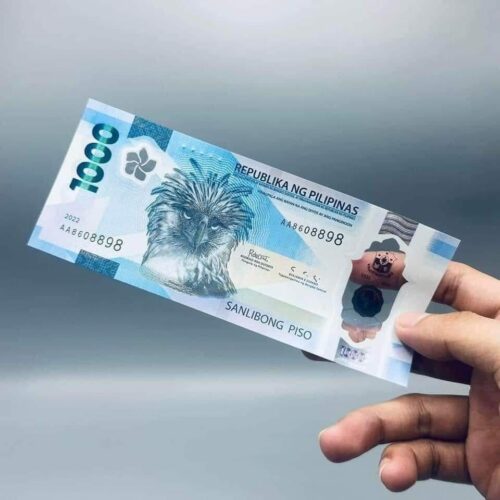
As part of its commitment to improving banknotes, the BSP has begun the circulation of the new 1,000 peso bill. As mentioned, these new banknotes are made of polymer. They’re initially available through over-the-counter bank transactions. Nevertheless, the BSP says that banks are already working on making the new polymer bill available through ATMs.
The BSP aims to put 500 million pieces of 1,000-peso polymer banknotes in circulation. The delivery of 10 million pieces was already fulfilled in April 2022. The remaining 490 million pieces, on the other hand, will be delivered between October 2022 and June 2023.
Using polymer to create the new 1,000 peso bill in 2022 comes with a lot of advantages. The BSP sums up such benefits in three words: smarter, cleaner, and stronger. Nevertheless, the country’s central bank breaks them down into five detailed explanations.
💸 Polymer Money is Smarter
In terms of security, the new polymer banknotes are much smarter. Not only do they have detailed images, but they also have sophisticated security features that will make counterfeiting much more difficult.
The ingenuity of polymer money also lies in its eco-friendliness. Even if polymer banknotes are plastic, producing them actually has less impact on the environment, thanks to their smaller carbon footprint. Production requires lower energy and water use and is less toxic to Mother Earth.
Still on its being eco-friendly, polymer banknotes are recyclable. When they’re already considered unfit for circulation, they can be recycled into other useful items, such as plant pots, garden furniture, and building materials.
💸 Polymer Money is Stronger
The existing paper money can withstand harsh elements. But the new polymer banknotes are designed to be much more durable. Not only can they weather temperature, but they are also resistant to water, dirt, oil, and wear and tear. This means that polymer money can last longer than paper bills.
The BSP notes that polymer money has a lifespan that’s at least two to five times longer than paper bills. On the central bank’s end, this translates to big savings on printing, replacement, and distribution costs.

💸 Polymer Money is Cleaner
The COVID-19 pandemic has changed the way people live. And the arrival of polymer banknotes is more relevant than ever. Apparently, the surface of polymer money isn’t only smoother but also non-absorptive. This means that bacteria and viruses have a significantly shorter survival time in these new banknotes than in paper money. This is based on the studies reviewed by the Department of Health (DOH).
Since the new 1,000 peso bill is made of plastic, you can easily sanitize it without worries. You can have peace of mind, knowing that your banknotes don’t harbor disease-causing germs.
💸 Polymer Money’s Design is Distinct and Functional
Polymer banknotes have a distinct design and texture, making them easily distinguishable from paper money. The design is also proudly Filipino, featuring the country’s recognizable flora and fauna icons, such as the Philippine Eagle, Sampaguita flower, the South Sea Pearl, and the Tubbataha Reefs Natural Park.
The BSP says that the new polymer money is more inclusive. This is because it features five embossed dots that serve as a tactile cue for visually challenged individuals.
💸 New Polymer Design Represents a Better Change
The release of the new polymer banknotes represents the country’s advancement when it comes to currencies. The Philippines now joins other countries that use polymer banknotes, such as Australia, New Zealand, Malaysia, Fiji, Mexico, and Vietnam. According to the BSP, these countries have experienced a significant reduction in counterfeiting cases after shifting to polymer money.
The transition to polymer money also appears to be timely. On average, central banks around the world shift to new money designs every 10 years. In the Philippines, the current set of banknotes first went into circulation more than a decade ago.
Read more: What to Do with Your Old Banknotes
How Should I Take Care of My Polymer ₱1,000 Bank Bill?
There have been a lot of clamors online about handling the new 1,000 peso bill, ranging from disgruntled posts to hilarious memes. This stems from an allegation that the folded new ₱1,000 polymer bill was refused as a form of payment in one mall. The mall in question denied the claim, assuring the public that it still accepts folded bank notes.[4]
But how should you take care of your new polymer 1,000 peso bill? Thankfully, the BSP has some guidelines.
✔️ The Dos of Handling the New Polymer Bill
The Central Bank shares only three ways of properly handling the polymer ₱1,000 bill. Check out the following:
- Keep your banknotes flat – This means that you should place your money in wallets that can accommodate its length.
- Make sure your banknotes are clean – If your new 1,000 peso bill is dirty or soiled, you can clean it with a damp cloth. Alternatively, you can use alcohol-based sanitizers to remove the dirt. Just make sure to wipe the money with a dry cloth immediately.
- Use your money – Use the new polymer banknotes the way you use your paper money—by spending them. Do not hoard them! The BSP reminds the public that buying or selling polymer money at higher prices is prohibited.
❌ The Don’ts of Handling the New Polymer Bill
Despite the durability of polymer banknotes, the public should avoid doing these to their money:
- Don’t deface, write, or leave a mark on your polymer money.
- Don’t cut, tear, or poke holes in your polymer money.
- Don’t staple your money. Should you need to keep your banknotes together, use rubber or paper bands.
- Don’t damage the clear windows of the polymer money. You must also not damage its metallic components and other security features.
- Don’t fold, crease, or crumple your banknotes aggressively. Otherwise, the bill will have permanent fold marks.
- Don’t iron your polymer money. Remember, it’s made of plastic.
- Similarly, don’t expose your polymer banknotes to extreme heat. Avoid placing it near an open flame.
- Don’t expose your polymer bills to corrosive chemicals, such as bleach or muriatic acid.
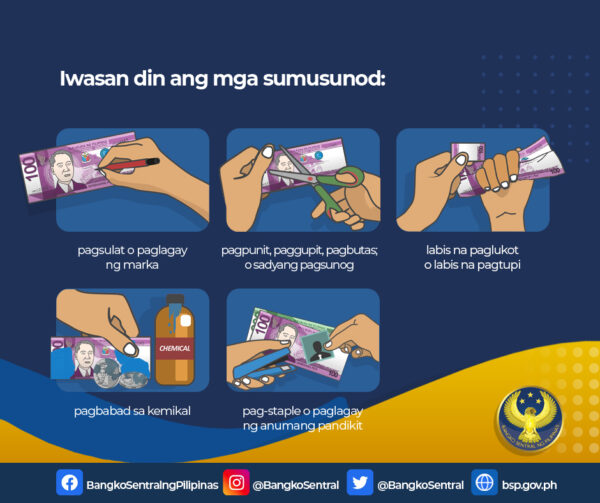
What to Do If You Receive Fake Peso Bills
Just received counterfeit money? You can submit it to the BSP. Thankfully, the whole process only involves three steps:
1. Determine Your Case Classification
The BSP recognizes two categories of problematic currency claims: simple and highly technical.[3]
Simple cases include demonetized currencies and damaged authentic notes whose value can still be recognized, among others. Highly technical cases include claims that require the opinion of an expert. Counterfeit money falls under this category.
2. Go to the BSP Office or Branch
Gather your notes and head to the nearest BSP office or branch. Since your case is a highly technical one, it will need an in-depth inspection. Thus, it will be forwarded to the Currency Issue and Integrity Office (CIIO) at the BSP-Quezon City branch.
Read more: The BSP: How to Save on Bank Fees and Charges
3. Fill Out an Application Form
Submit your duly accomplished application form to the attending BSP teller. Remember that the processing of highly technical cases, such as fake money in the Philippines, takes 20 working days from the date of receipt by the BSP.
How to Avoid Fake Money
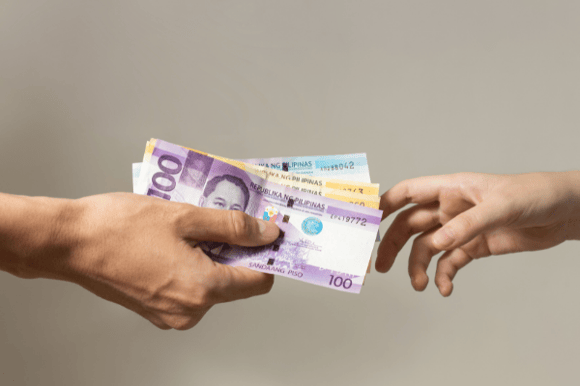
It’s important to note that it’s not just the scammers who perpetuate the existence of fake notes in circulation. Unwitting friends and customers may hand you counterfeit money, too. Avoid receiving it while educating someone who unknowingly hands it to you. Here are some tips:
1. Inspect Your Cash As Soon As You Receive It
Using the FEEL, LOOK, TILT method, inspect the money right after your family, friend, or customer gives it to you. Don’t let people pressure or rush you into accepting the cash right away. Even if you’re in a hurry, check at least two or more security features of each banknote that you receive.
In case it’s too late to inspect the banknotes, just compare them with other notes that you know are genuine. Side-by-side comparisons should help you identify the faults of the fake bills.
2. Make Sure to Receive Your Money Under Good Lighting Condition
If you notice, most of the Philippine banknotes’ security features are only prominent when you view them under good lighting conditions. As such, avoid accepting money if the environment’s too dark and doesn’t allow you to check the security features.
3. Use a Fake Money Detector
Business owners or those who receive large wads of cash from clients should have a fake money detector. This device uses a UV light that allows you to see the hidden security features of a banknote.
How to detect fake Philippine money using UV light, you ask? The money detector's UV light will reveal a bill’s security fibers, which will appear like tiny neon lights. One important thing to remember is that legitimate money absorbs UV light, so it shouldn’t appear bright or reflective under the detector.
Even if you’re on the go, you can still check your money by using a portable fake money detector. These detectors usually come with a flashlight or laser pointer, and you can score one via online stores.
4. Train Your Employees to Detect Fake Money
Aside from equipping your employees with a fake money detector, you must train them how to know if the money is fake. While you’re at it, train them to spot suspicious behaviors of customers handing over supposedly fake money; these customers may be nervous or appear in a hurry.
5. Bring Your Transactions Online as Much as Possible
Reduce the odds of receiving fake money by carrying out your financial transactions online. Using your online wallets and mobile banking apps is not only safe but also convenient. You may also implement this system in your business, so customers won’t have to pay you in cash.
Final Thoughts
Despite the proliferation of digital transactions and cryptocurrencies, people remain reliant on tangible cash. Given that, there’s always a chance that you’ll receive counterfeit money.
Avoid falling prey to schemers and fraudsters by knowing how to differentiate fake money vs real money. Truth be told, inspecting every banknote that comes your way is taxing and time-consuming. But it will be worth it, and having the peace of mind will always be priceless. Moreover, you’ll be more confident every time you transact using cash.

Sources:
- [1] BSP Warns of Fake Bills from ATMs (Philstar, January 2022)
- [2] New Design of ₱1,000 Bill (Rappler, 2021)
- [3] How to Submit Mutilated/Doubtful Banknotes and Coins (Bangko Sentral ng Pilipinas)
- [4] Social Media Post on Rejected ₱1,000 Polymer Banknote Goes Viral (Inquirer, 2022)







